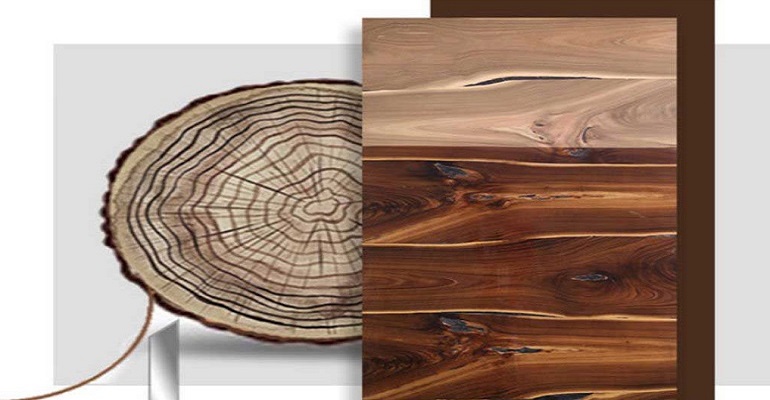Wood veneers are elegant and well-liked materials that are used to enhance everything from furniture to musical instruments, as well as the interiors of houses, offices and other business enterprises, aircraft, and more.
But did you know that there are two best different types of veneer plywood: natural wood veneer and engineered wood veneer?
Natural Veneer
A natural veneer is a one-of-a-kind flitch carved from logs that are influenced throughout its life by a tree's reaction to its soil composition, geographic location and other growth factors. Natural veneer sheets inherent patterns and markings aren't altered or enhanced in any way, making each natural veneer from a tree, unique work of art.
Reconstituted Veneer
A reconstituted veneer is more of print on softer wood which is available in different colors and designs. As the entire process of manufacturing a reconstituted veneer is man-made, customer can avail as many identical sheets as required, just the opposite of natural veneer where each lot of a particular species is limited. Reconstituted veneer is mostly preferred by contractors because of its cost effectiveness in comparison to natural veneer.
The Difference in Manufacturing Process
Production Methodologies: Slicing is a term used to describe the process of making natural wood veneer. When an entire log, or a portion of a log, is sliced with a very sharp knife, thin sheets of veneer are produced.
Engineered wood veneers, on the other hand, are made of softer, faster-growing renewable species. This veneer is coloured in vats, dried, then bonded together into various shaped blocks, from which it will be re-sliced and re-glued to achieve the appropriate design. Natural wood grains such as flat cut "cathedral," quarter cut straight grain, burl, or another form can be imitated in the end product. It's even possible to make architectural fantasy patterns.
Production Costs and the End Product: Natural wood veneers can be more expensive to make than engineered wood veneers. This is because slicing fast-growing trees and glueing them into blocks for bulk manufacture is less expensive. Patterns and colours can be readily copied from one block to the next. The blocks range in size from 110” (280cm) to 132” (335cm) long and 24” (61cm) wide.
As a result, each engineered veneer leaf produces less waste and saves money due to a better yield. The best natural wood veneer is rarer and more difficult to get by. It is also more highly appreciated as a material, owing to its ability to retain Nature's unique qualities.
The distinction in Design: Natural veneers are one-of-a-kind; even trees of the same species will have different patterns in their wood. Engineered veneers are man-made, allowing for mass production of the resulting designs.
Leboris provides the best genuine natural wood veneer where the customers can choose from a host of natural veneer designs and only company in veneer industry in India to manufacture 100% Natural veneer, ensuring the finest aesthetic appeal.

